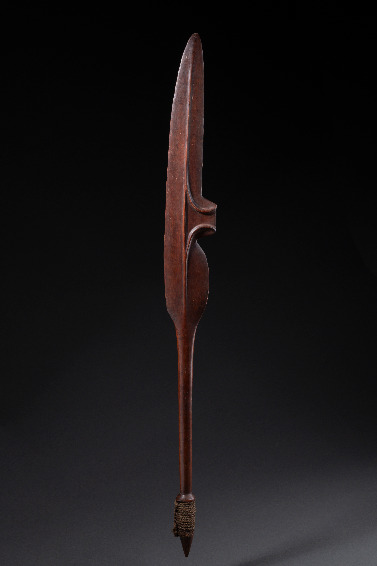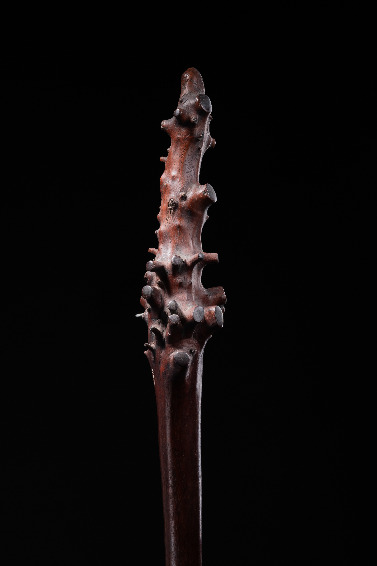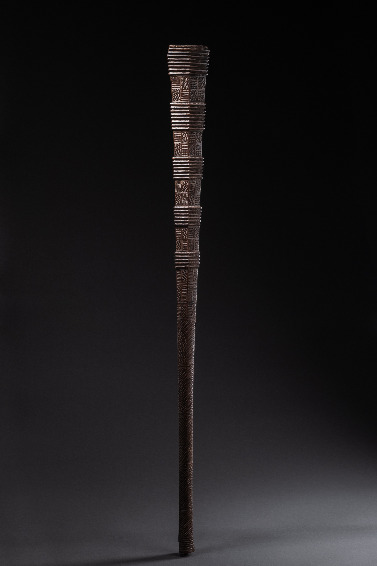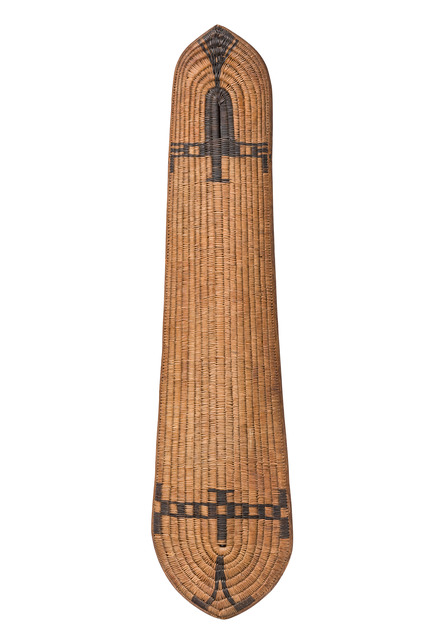Art history from around the world
The collectors, their stories, the works of art - we bring it all together.
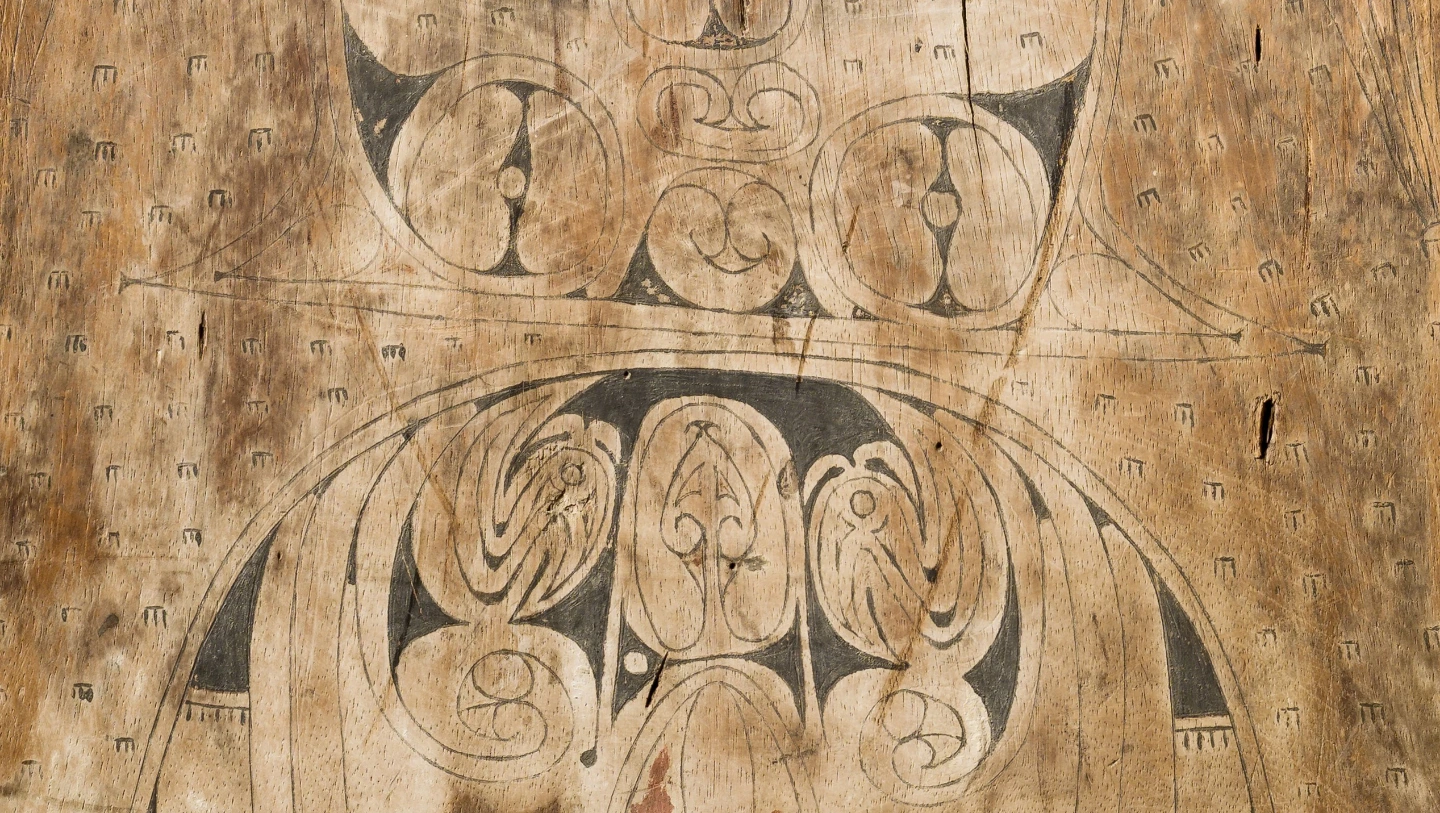
Auction in Würzburg:
Saturday, 12 April 2025 – 2 pm (CEST)
Preview:
From April 9 to 11 - from 10 am to 5 pm (CEST)
And by appointment
Every collection tells a unique story – stories of passion, discovery, and the desire to experience and preserve beauty in all its forms. We bring these stories together and are delighted to present you with historically, culturally, and artistically significant works in our two-volume catalogue – works from ancient America and Arctic cultures to Africa, Asia, and Oceania.
Papua New Guinea - Bismarck Archipelago - New Ireland: Rare "ges" mask for "malagan" ceremonies, 19th century
ProvenanceFrigate Captain Rudolph Brosch, Austria (coll. in situ, 1894) Thence by descent in the Brosch family Dorotheum, Vienna, 15 December 2020, lot 52 Galerie Flak, Paris, France (2021)Gabon, Punu-Lumbo: Female face mask "okuyi" or "mukuyi"
ProvenanceJohann F. Gustav Umlauff (1833-1889), Hamburg, Germany Julius Konietzko (1886-1952), Hamburg, Germany (1933) Lore Kegel (1901-1980), Hamburg, Germany Boris Kegel-Konietzko (1925-2020), Hamburg, Germany Kegel-Konietzko & Dorn, Hamburg, Germany
Burkina Faso, Lobi: Standing male figure "bateba yadawora"
ProvenanceHenricus Simonis, Düsseldorf, Germany Rolf Gillhausen, Hamburg, GermanySolomon Islands - Bougainville, Buin District, Telei: Rare dance shield
ProvenanceHeinrich Ahlvers, Germany Ahlvers worked from 1890-94 as a general purser for the shipping company Norddeutscher Lloyd in German Guinea. Until his internment in Australia in 1914, he ran a hotel in the former Friedrich Wilhelm harbour, now Madang, on the northern tip of Papua New Guinea.D. R. Congo, Luba-Shankadi, Sungu, Kiloko of Bussangu: Caryatid stool "kipona" ("kihona") with mother figure
ProvenanceLudwig Bretschneider, Munich, Germany (1964)
Exquisite South Sea clubs from the Alexander Kubetz Collection, Munich (1946-2023)
Fascination with South Sea art: Clubs, hatchets, axes from the South Sea islands are much more than just weapons or everyday objects. Their extremely artfully crafted shapes and carvings combine practical functionality with rich symbolism.
Steven Hoopers wrote of the elaborately crafted axes from Mangaia, four of which we are presenting, that they represent „the highest level of craftsmanship in woodworking, binding techniques and stoneworking“ (Hooper, Pacific Encounters, Norwich 2006, p. 229) (lots 158 to 161). The most historically and ethnographically authoritative description was passed down long before by William Wyatt Gill, who experienced the islanders of Mangaia as an English missionary from 1852 to 1872: „The stone adzes were secured to their wooden hafts by means of fine sennit, itself esteemed divine. It was fabled that the peculiar way in which the natives of Mangaia fasten their axes was originally taught them by the gods“ (W. Wyatt Gill, Jottings from the Pacific, London, 1885, p. 224).
Alexander Kubetz‘s South Seas offering comprises 26 lots; from an ethnographic and art historical perspective, an exquisite collection and testimony to the successful interplay of tradition, spiritual symbolism and mastery of craftsmanship.
The collection is concluded with another highlight: a rare club from the Vanuatu Islands whose distinctive leaf-shaped design, according to Felix Speiser was „only found on the Île de la Pentecost“ (Ethnology of Vanuatu, An Early Twentieth Century Study, Honolulu, 1996, p. 207) (lot 181)
Works from a Munich private collection (Part 2)
We were able to impressively demonstrate the appeal of this collection in our April auction exactly one year ago: masterpieces of Oceanic and African art that attracted a lot of attention in the international art world and were revalued with record hammer prices (auction catalogue no. 102, April 13, 2024, from lots 20 to 38).
We are now delighted to be able to present you with the second part of this collection: historically, artistically and culturally significant works from ancient America through Arctic cultures to Oceania and Africa.
These include an elaborately designed altar head of a high-ranking dignitary from Benin; a work by the Edo-Bini, which was published in 1973 in Karl-Ferdinand Schädler‘s groundbreaking publication on „African Art in German Private Collections“ (lot 241).
Lot 208 includes a magnificent work from the Nias (Indonesia): a particularly large and richly decorated ancestor figure „siraha salawa“, which Sotheby‘s auctioned in London in 1987.
In total, the second part of this collection offer comprises 68 lots (from lots 193 to 260), with numerous works that are linked to Ludwig Bretschneider in terms of collection history, including beautifully crafted ethnographic works.
Indonesia - Nias: Magnificent male ancestor figure "siraha salawa"
ProvenanceSotheby’s London, 29 June 1987, lot 2 German Private Collection, MunichNigeria, Benin, Edo-Bini: Altar head "uhunmwun-elao" of a dignitary
ProvenanceLudwig Schmidt, Munich, Germany German Private Collection, MunichD. R. Congo, Lwalu (Lwalwa): Anthropomorphic mask "mfondo"
ProvenanceLucien Van de Velde, Antwerp, Belgium Karl-Ferdinand Schädler, Munich, Germany (ca.1970) Ludwig Schmidt, Munich, Germany (1973) German Private Collection, Munich
The Pre-Columbian Collection of Angela Henkel-Küsters, Krefeld (1944-2024)
She was the youngest of five daughters of the Küsters family: Angela Henkel-Küsters grew up in the 1950s, the years of the economic miracle, into a self-confident young girl, in a home that placed great value on a good education for its children.
Her father, a trained master locksmith, founded the Eduard Küsters machine factory in 1953 in Krefeld, the industry of which had been destroyed and devastated by the war, and – here too – with a far-sighted approach patented a roller technology for a previously technically unattainable processing of textiles, paper and non-wovens.
Against this family background, the path and educational opportunities for the children of Mechtilde and Eduard Küsters were optimally prepared – for Angela, literally golden. She had discovered her great interest in art very early on, and so immediately after graduating from high school she enrolled to study goldsmithing at the Krefeld School of Applied Arts (now Niederrhein University of Applied Sciences), which she successfully completed with a degree in engineering and design. There she also met her future husband, Wolf-Dieter Henkel. Both shared a great interest in art and ancient cultures. By the end of the 1960s they had already acquired the first collector‘s items from Africa, China and pre-Columbian times.
Angela Henkel-Küsters initially put her job as a goldsmith on hold for her two children, Anja and Klaas, and after her maternity leave she worked for the Krefeld jeweller Bründt.
After separating from her husband, she met the well-known Düsseldorf sculptor, graphic artist, university lecturer and art collector Kurt Sandweg (1927-2008) – in 1966 he had already been able to take part in archaeological excavations during an eight-month stay in Peru, Mexico and Brazil. In 1975/1976 he had the opportunity to spend several weeks on the Ivory Coast – trips that formed the foundation of his own collection of pre-Columbian ceramics and African sculptures..
Since the 1990s, she has made numerous trips with him to the ancient sites of Egypt and Mexico, during which she increasingly concentrated on collecting Coptic artifacts and pre-Columbian ceramics and textiles.
The current collection offer from Ancient America comprises 38 lots: impressive works from Ecuador, Mexico and Peru, which she had already made accessible to a wider audience in the rooms of her own goldsmith gallery “Cassetta” in Kempen. Not only did she present her own goldsmith work but was happy to invite people to changing themed exhibitions from contemporary artists to pre-Columbian art and textile artifacts.
Mexico, Jalisco: Standing Figure, Protoclassic Period, ca. 100 BC to 250 AD
ProvenanceAngela Henkel-Küsters, Düsseldorf, GermanyPeru, Nazca: Figural stirrup vessel, ca. 100 BC to 200 AD
ProvenanceKetterer, Munich, 29 June 1991, lot 310 Angela Henkel-Küsters, Düsseldorf, GermanyMexico, Jalisco: Seated figure of a pregnant woman, Protoclassic Period, ca. 100 BC to 250 AD
ProvenanceAngela Henkel-Küsters, Düsseldorf, Germany
Pre-Columbian ceramics from the Klaus Kalz Collection, Berlin (1935-2023), Part 3
Ceramic art of the Moche and Nazca: artistically, this stands for original creativity, multifacetedness and a highly narrative style. Art lovers around the world appreciate them precisely for this, and for their perfect craftsmanship. We are all the more pleased to be able to present the aesthetics of these advanced cultures in the third and final part of the Kalz collection; works from the early intermediate period (ca. 200 BC to 400 AD), which Klaus Kalz dealt with in depth not only artistically but also empirically (for more information on the collection, see catalogues 102 and 103, auctions on April 13 and November 16, 2024, parts 1 and 2).
The collection offered includes 43 lots, this time with a focus on figurative stirrup vessels and cups. In addition to ancient Peru, we are showing figurines from the Protoclassic period (Mexico, ca. 300 BC to 400 AD) as well as figurative sculptures from the Tumaco-La-Tolita culture from the Pacific coast of northern Ecuador and southern Colombia (ca. 600 BC to 400 AD).
Since the 1920s, the art of Mesoamerica and South America has captivated art lovers around the world – a fascination that continues to this day. In this context, the Kalz Collection remains an outstanding testimony to these unique art traditions.
Peru, Moche: Stirrup vessel: Owl, Early Intermediate Period, ca. 200 to 600 AD
ProvenancePeter Pleuss, Solingen, Germany Klaus Kalz, Berlin, Gemany (1974/1975)Peru, Nazca: Stirrup vessel with killer whale and trophy heads painting, Early Intermediate Period, ca. 200 to 400 AD
ProvenanceKetterer, Munich, 14 November 1985, lot 181 Klaus Kalz, Berlin, Germany (1985)Peru, Nazca: Lentoid shaped stirrup vessel with warriors and trophy heads, Early Intermediate Period, ca. 200 to 400 AD
ProvenanceKetterer, Munich, 29 Juni 1991, lot 333 Klaus Kalz, Berlin, Germany (1991)
Weapons and shields from the Erwin Melchardt Collection
D. R. Congo, Mangbetu: Sickle knife "trumbash", "dupa", "emambele"
ProvenanceErwin & Susanne Melchardt, Vienna, Austria







